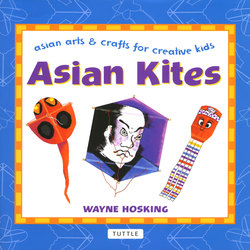Asian Kites

Реклама. ООО «ЛитРес», ИНН: 7719571260.
Оглавление
Wayne Hosking. Asian Kites
Отрывок из книги
While watching your creation dancing on the wind, do you ever wonder who flew the first kite? Did the first kite come about by accident, by intentional design, or, as some cultures believe, as a “gift from the gods"? Even though the answer is lost in the distant past, scholars believe the existence of kites dates back to between two and a half to three thousand years ago. Ancient kites once carried messages—in the form of special shaped kites, pictures, or other cultural symbols—from earthbound humans to the heavenly beings in celebration of births, prosperity, and to ask for blessings. Over the centuries even common people began to fly kites, and everyday pleasure replaced the religious significance attached to kite flying.
Up until recent times, China received credit for developing the kite. This has been generally accepted because the Chinese had an advanced civilization that included the written word, allowing them to record historical events. The Chinese have a number of theories for the conception of the kite. On the top of the list is a legend about Meng Chia's bamboo hat being blown from his head by a sudden gust of wind. The farmer quickly raced after his hat, but was only able to grab an attached string. To his surprise, the hat kept on flying on its tether in the stiff breeze. The farmer enjoyed his flying hat and shared his discovery with the rest of his village.
.....
BALSAWOOD can also be used, but best suits small kites, for which weight, and not strength, is critical.
BAMBOO is the spar material of choice for Asian kites because of its availability and high ratio of strength to weight. Bamboo is generally available whole, but most small kites require only split-bamboo sticks. Matchstick bamboo window shades can be dismantled to make kite spars for small kites. Bamboo and window shades are available from specialty stores.
.....